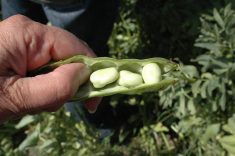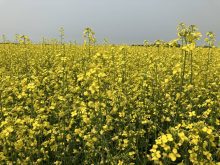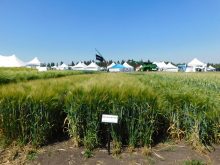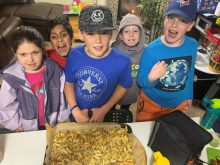NAT KAV
“Tolerance to sclerotinia has not been generated through traditional breeding programs, as far as I know”
ASSOCIATE DEAN,
UNIVERSITY OF ALBERTA
Sclerotinia, the fungal disease which is the bane of several crops including canola, may have a new enemy – mice.
Or at least, antibodies from mice. A research team led by Nat Kav, an associate dean at the University of Alberta, has introduced genes from mice into canola to create resistance to sclerotinia.
Read Also

New crop insurer policy enables easier startup for faba beans
Agriculture Financial Services Corporation updated its normals for faba beans, which may open the door for more Canadian producers to feel comfortable growing the pulse crop in the future.
Antibodies are proteins that allow the animal to fight a bacteria, virus or parasite. Animals can create antibodies to disease, but plants cannot.
Kav and his researchers were able to generate antibodies against sclerotinia in mice. They then took bits of the genetic material from the mice, isolated the specific antibodies and introduced that DNA into canola.
The research team found the DNA was able to detect the fungi that caused sclerotinia, blackleg and alternaria blackspot. When the genes were put into the canola, the transgenic plants were significantly resistant to all three diseases.
“Tolerance to sclerotinia has not been generated through traditional breeding programs, as far as I know,” said Kav.
Since the transgenic canola has resistance to three different diseases, this could also play a part in reducing the amount of fungicide needed to destroy it. “Any reduction in input is good as far as the producer and the environment are concerned,” Kav said.
The project, which took six years, was funded by the Alberta Agricultural Research Institute. The transgenic experiments have only been done in the
greenhouse, and will need to be taken out into the field and tested once the appropriate regulatory approval has been given and funding has been obtained.
Kav has been at the University of Alberta since 2002. Earlier, when working as a research associate at the University of Guelph, he began examining plant responses to disease and stress. He then went back to medical technology and diagnostics at a private company in Toronto before coming to Edmonton.
Kav had no prior specialization in agriculture, but was lured into the field by his interest in plant diseases and diagnostics.
“When I started working with plants in Guelph, I figured out that plants were interesting and there were quite a few opportunities to apply the same sort of techniques that one applies in human diagnostics to looking at plant diseases and plant responses to stress.”
Kav’s research generally involves stressing plants through changing environmental factors or by giving the plants diseases such as sclerotinia. The researchers then examine how the plants respond and what biochemical pathways are turned on as a result of stress. This helps to develop a better understanding of plant responses and ways humans can intervene to help the plant.
Kav believes that the biggest hurdle in working with transgenic plants is public perception. “The public needs to be educated about how the plants are generated,” he said.















